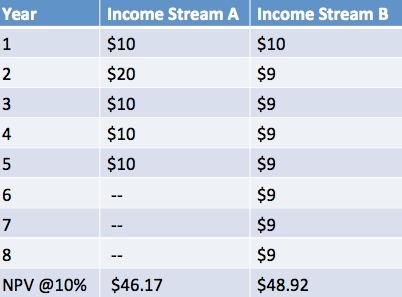Think for a minute about the relationship between words and reality. In theory, we use words to describe reality. In practice, it goes the other way too. The words we use first affect our perceptions of reality, and then – through acting on our perceptions – reality itself.
Propaganda is the obvious example. But there’s a creeping, more insidious form of reality-distortion that has been playing out in the field of marketing in recent years.
Let me hone in on just three words: Content, customer, and relationship.
Ripped from the Headlines
Before and after AT&T’s recent US District Court victory in its pursuit of acquiring Time Warner, CEO Randall Stephenson stated on several occasions (e.g. here and here) the strategic rationale for the deal, basically:
We have direct relationships with over 120 million customers; data analytics allow us to match them to their preferred content, allowing maximum monetization.
I picked this example precisely for its banality. There is nothing incomprehensible about this statement; nothing logically or strategically wrong with it in business terms. We all understand what Stephenson means.
And yet – this statement, had it been made just 10 years ago, would have meant something entirely different. In fact, I’m not sure it would have been even comprehensible. That’s how far we have moved in terms of the meaning of words.
Content. Thanks to the cool Google Trends tool, I can tell you that interest in the phrase “content marketing” as a search term grew by 1,400% in the 8 years from July 2000 to now. With that growth came a change in meaning.
Way back then – ten years ago or so – the dictionary definition of ‘content’ was: “the substance or material dealt with in a speech, literary work, etc., as distinct from its form or style.” Synonyms included “subject matter, subject, theme, argument, thesis, message, thrust, substance, matter, material, text, ideas.”
That definition is now woefully out of date. Here’s how Wikipedia talks about content marketing:
“Digital content marketing, which is a management process, uses digital products through different electronic channels to identify, forecast and satisfy the necessity of the customers. It must be consistently maintained to preserve or change the behavior of customers.”
Today’s “content” (new meaning) is literally “content-free” (old meaning). (See how hard it is to talk about this stuff?). The relevance – and even the substance – of today’s “content” lies solely in its ability to generate changes in behavior.
“Content” no longer means “the substance or material dealt with…as distinct from its form or style.” Instead, it is precisely the ‘form or style’ that has become the arbiter of quality. If they click on it, it’s good quality; if not, it’s bad content.
Anecdote. I get about two inquiries per week from “marketers” offering to write “content” for this blog, including clickable links, for which they offer to pay me. About two thirds of them literally have spelling or grammatical errors in their (vastly impersonal) emails. Such a low bar, and yet the majority fail.
I invite the minority who can hurdle that low bar to feel free to take a shot, but that they actually have to demonstrate some knowledge of the subject of trust.
Most of them take me up on the offer to send a sample – and every single time, the drivel they send is massively content-free (old definition). It is banal, un-insightful, trivial, showing no interest in the subject matter – little more than clickbait, cadged from other people’s “content.”
The word “content” has been stripped and flipped. Not only does it no longer mean what it meant – in the case of “content,” it has arguably come to mean the opposite – what we might have called “content-free” in another era.
Customer. This word grew only 300% in relevant Google search interest in the last decade. In the same time period, the word “consumer” actually declined by 50%. I’d like to suggest that today’s “customer” is what we used to mean by “consumer.”
Merriam Webster defines the difference thusly:
Customer: An individual usually having some specified distinctive trait: “a real tough customer”
Consumer: One that utilizes economic goods: “Many consumers make purchases on the internet”
In other words, one is an individual, a person, a human. The other is an abstraction, a datapoint, a statistically refined category.
Back in the 1990s, Martha Rogers and Don Peppers foresaw a brave new world of “One to One Marketing,” in which an organization fine-tuned its responses to address the unique needs of customers, ultimately at the individual level. They talked about “Interacting with customers” individually through “mail, phone, or online communication.”
Let me ask you: If you’re one of Randall Stephenson’s 120 million “customers,” have you recently tried “interacting” with AT&T through “mail, phone, or online communication?” Do you feel like an “individual?” Or like one of many ‘consumers?’
The word “customer” – just like “content” – has been stripped of its common meaning of only a decade ago. It has become bloodless and transactional. [Note: there’s a lot to like about this: I assure you I love buying online and having interconnected CRMs that learn my desires. But I don’t confuse it with having a ‘relationship.’]
Relationship. Google Trends tells us that the popularity of “relationship” as a search term has roughly doubled in the last decade. The Cambridge dictionary suggests “a relationship is the way two or more people are connected, or the way they behavior toward each other….A relationship is also a close romantic relationship between two people.”
That is so last decade.
For Randall Stephenson (and I’m not picking on him alone, it’s true for any BigCo these days), a “relationship” means a billing relationship, i.e. we send them invoices and they interact with our billing system, in accordance with complex fine-print clauses contained in contracts.
Or it can mean “Amazon may want to construct a more seamless relationship with its millions of customers.” Hmmm…ever tried to talk to an Amazonian?
A “relationship” is at the heart of CRM software, the “single largest area of spending in enterprise software” by 2021. Yet said “relationship” is conspicuously devoid of much in the way of interpersonal connection, the essence of the old definition of relationship.
Adding It All Up.
I didn’t call out Stephenson’s last word: monetization. But it speaks volumes for itself.
For all too many companies, monetization has become the goal, the objective, the point. And if your goal is simply and solely to monetize the customer-content relationship, you will end up cheapening the relationship – precisely the opposite result of what (supposedly) was intended. This is no different from shareholder-wealth-maximizing companies of the ’80s. Treating profits as goals rather than outcomes not only ruins relationships, but ultimately ruins profits as well.
Listen, I’m not trying to make a Luddite case. I am all in favor of most things tech and business. I’m trying to point out, however, that when we subconsciously appropriate old words for new realities – and fail to notice the shift – we end up adrift.
Is it any wonder we hear so much about declining customer loyalty? Unfulfilled young people’s real-world relationships? Angst, anomie and anger in social interactions? Reversion to tribal political connections? Lowered institutional trust ratings?
Part of the answer, I believe, is that in our haste for the brave new world, we neglected to provide names for some of the old virtues and values. Yet without names, we can’t talk about them. And if we can’t talk about them, we forget them, and create a reality devoid of those same virtues and values.
Words – or their absence – really do affect the world we live in.


